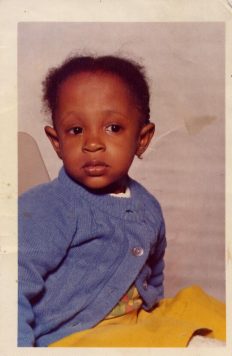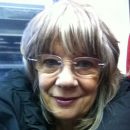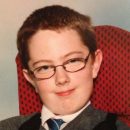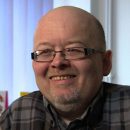School Culture
Michelle Daly: Small Classes
Michelle was born in 1972 in Newham, London. She attended a local special school from age five until sixteen and then went on to a local mainstream college.
Here Michelle describes the impact of being split into small impairment specific groups, in what was already a small school.
https://howwasschool.allfie.org.uk/wp-content/uploads/2013/06/small-classes.mp3
Again we didn't really understand what was going on but, they just separated us out and, and we were like 'Hold on a minute, we were in a class, we got on with who we all got on with', but then to separate us like that, then you start creating hierarchy, you're basically sayin' 'This impairment is more, you know, is a higher and this impairment' is more lower' and that's what happened until we left school.
It was located in Plaistow, within the London Borough of Newham and most disabled children who had physical impairments would have attended the Elizabeth Fry School. It was a very small school, I think it had about fifty children in total, it had a nursery and it went right the way until you were eighteen, you would stay up until you was eighteen but I couldn't see the point of that so I started in the nursery, so I Ieft when I was sixteen.
Class sizes were extremely small, my class had four pupils so you can, if you think in a school so small, you don't really have much opportunity of engaging and making meaningful friendships, you think of a mainstream school there's thousands of children in a mainstream school so I had, you know, three other, but with me it was four, so there was three other children, what if you can't stand any of them?
Transcript
One of the things that they did do which really was upsetting I think, actually destroyed a lot of us, at one point there was eight of us in a class and then they separated us into our impairment groups, and I was one of the children they couldn't find a group to put me in. So then they mixed the ages up, so you didn't no longer have Year One, Year Two, Year Three in terms of the senior year, how it went, they just mixed you in impairment groups, so us as youngsters found that quite upsetting.Again we didn't really understand what was going on but, they just separated us out and, and we were like 'Hold on a minute, we were in a class, we got on with who we all got on with', but then to separate us like that, then you start creating hierarchy, you're basically sayin' 'This impairment is more, you know, is a higher and this impairment' is more lower' and that's what happened until we left school.
It was located in Plaistow, within the London Borough of Newham and most disabled children who had physical impairments would have attended the Elizabeth Fry School. It was a very small school, I think it had about fifty children in total, it had a nursery and it went right the way until you were eighteen, you would stay up until you was eighteen but I couldn't see the point of that so I started in the nursery, so I Ieft when I was sixteen.
Class sizes were extremely small, my class had four pupils so you can, if you think in a school so small, you don't really have much opportunity of engaging and making meaningful friendships, you think of a mainstream school there's thousands of children in a mainstream school so I had, you know, three other, but with me it was four, so there was three other children, what if you can't stand any of them?
Explore more
Explore stories by theme or view the timeline of significant events in education for disabled people
![How Was School? [logo]](https://howwasschool.allfie.org.uk/wp-content/themes/hws-base-theme/assets/img/allfie-logo-original.svg)





